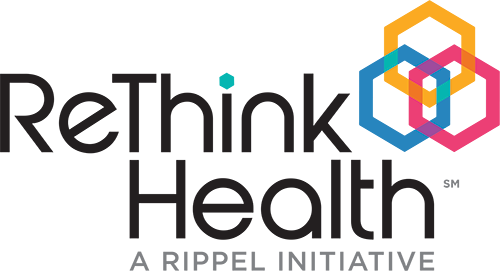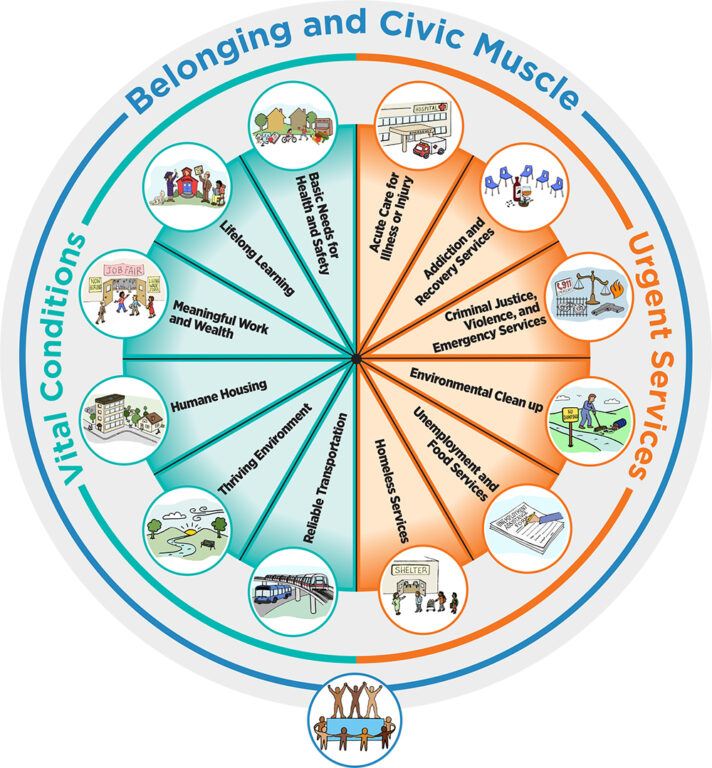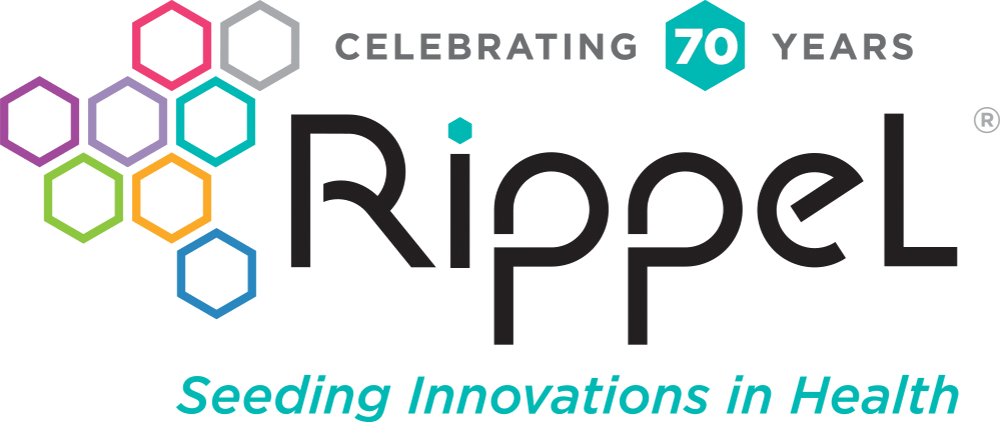Shortly before COVID-19 changed the world, my colleague Anna Creegan shared a blog about ReThink Health’s efforts to help regional funders work together and reallocate resources to improve their systems for health and well-being. Little did we know then that we would soon need to sustain the work through a health crisis, a time when regions need to come together most.
In the summer of 2019, ReThink Health’s Portfolio Design for Healthier Regions project began working with stewards from two regions: 1) 5 Healthy Towns Foundation, serving five adjacent small towns located in southeast Michigan, and 2) Palm Health Foundation and BeWellPBC, a behavioral health initiative in Palm Beach County, Florida. Fortunately, the multiple challenges of 2020 didn’t derail these regional partners but, instead, significantly strengthened their determination to more intentionally direct resources toward health and well-being.
In fact, the table we set for these partners and the tools we introduced them to enabled them to avoid getting swept away in the upheaval that dominated 2020. We offered our partners a clear sightline into how to balance investments in urgent services (the kind anyone facing adversity would need to temporarily regain or restore their health and well-being) with investments in vital conditions (efforts with the potential to improve health and well-being and also prevent harm and avert the need for urgent services).
In this first of four related blog posts, we share the framework we used as our guide over these last 10 unprecedented months of work with these regional stewards. And, in three subsequent blogs, we will share what we learned from this work about Interdependence, belonging and civic muscle, and stewardship (see “definitions” box).
Guiding Framework
In their respective regions, our stewardship partners recruited organizations—such as taxing agencies and county mental health services agencies—responsible for directing and allocating funding that may significantly impact health and well-being (see Site Partners box). ReThink Health designed and facilitated a series of meetings, including a day-long “design lab,” followed by bi-monthly “stewardship investment clinics,” that focused on the project’s key learning objective: What will it take to shift partners’ mindsets from making siloed investments on their own to making coordinated investments from a regional portfolio for more equitable health and well-being?
Partners mapped their investments to reveal redundancies and gaps, reinforcing the rationale for creating more intentional partnerships and network strategies rather than going it alone. They shared their organizations’ interests and goals while exploring their own constraints that inhibit embracing a stewardship mindset for allocation of resources. Most importantly, the stewards began to see how they can lead change in a complex system through intentional partnerships and network strategies designed to produce vital conditions in addition to meeting urgent needs.
In our next three blogs, you will hear directly from our site partners about engaging, reflecting, and shifting their mindsets and practices as the result of our work together. Each post will describe a discovery that ReThink Health and our project partners believe hold the greatest potential to establish more effective and equitable resource allocation.
- Next week, we will discuss how philanthropy stewards are encouraging other regional stewards to cultivate intentional interdependence.
- Then, our partners in Palm Beach County will share how they grappled with shifting their own practices and investments in belonging & civic muscle to advance equity around youth mental health in their region.
- And in our final post, both regions will describe how they have shifted in their understanding of their roles as system stewards and what that means for how they invest resources now and in the future.


